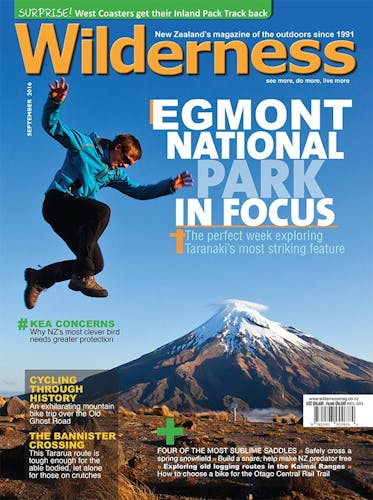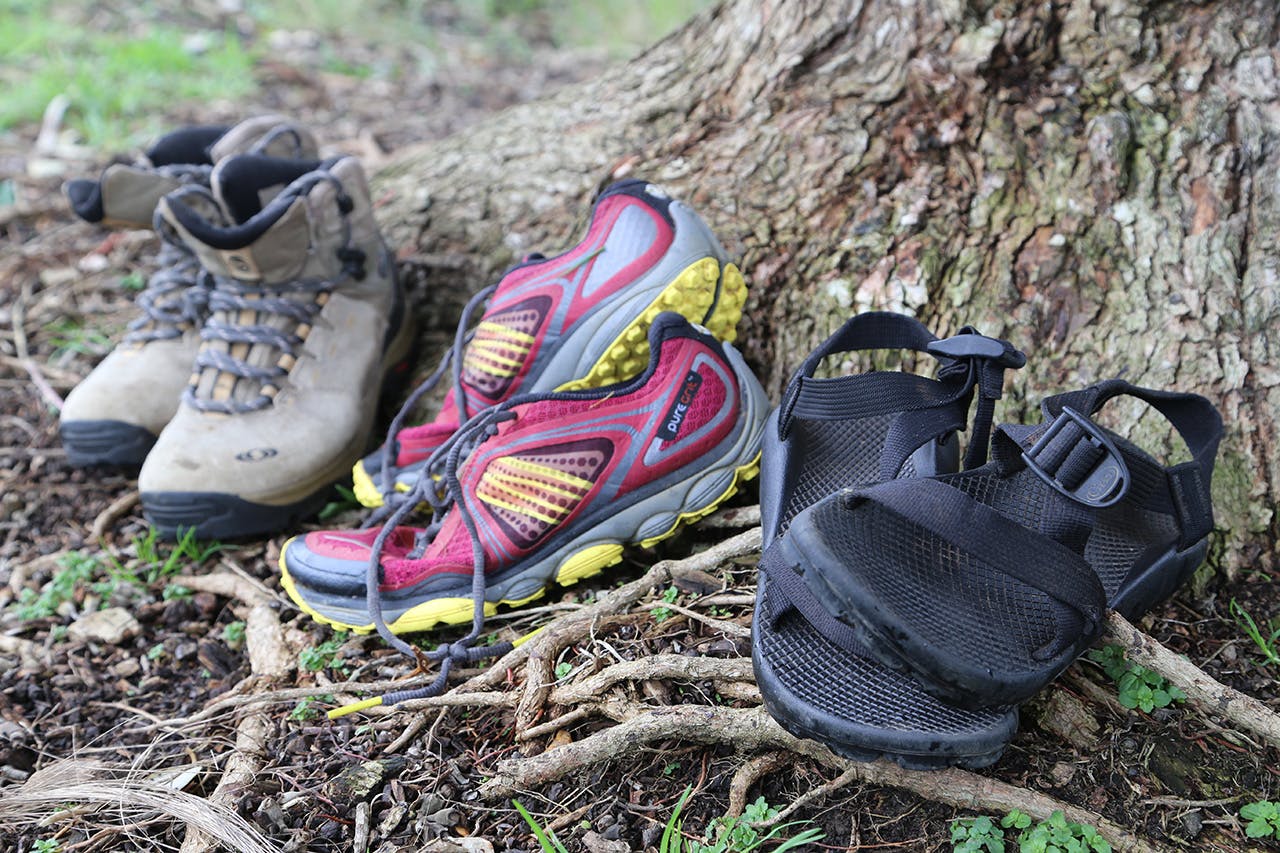Do you really need heavy, high–top boots for all your tramps? Wilderness readers share their opinion
These days, trampers are spoiled for choice when it comes to footwear. There are a few schools of thought on the topic: some maintain that sturdy, ankle-supporting boots are the only way to go, while others will tell you that an ultra-light pair of hiking shoes is the best option. There are even some hardcore minimalists who take the Frodo approach, insisting sandals are all you need (see Naresh Kumar’s story in Wilderness, February 2015).
Protection for our precious hooves has come a long way. Gone are the days of the leather-clad, heavy and stiff boot of yesteryear; tramping shoes and boots today are sleek, cushy, and a fraction of the weight.
It’s a highly personal choice, evident from a Wilderness query on Facebook. We asked readers, “What’s better: tramping boots or hiking shoes?”
Of about 30 responses, 14 people said they opt for boots, many maintaining they feel more protected and supported on trails. Seven said they prefer shoes, with a strong contingent saying they’re more comfortable, lightweight and flexible. Ten were adamant that it depends on a few factors; the terrain, weather, and duration of trip.
Jacqui Irwin from Nelson is firmly in the ‘less-is-more’ camp. She says she’ll sometimes forgo shoes altogether, opting instead for a trusted pair of sandals even on long walks.
“Having suffered with horrendous blisters early in my (lengthy) tramping career, I am now much more liberated and just wear what is actually needed, which might often be a pair of sandals for a summer tramp up the Cobb Valley on a formed track,” Irwin says.
Irwin is unconvinced that her feet or ankles are better supported with boots or high-top shoes.
“My ankles are strong and flexible from past tramping. No boot is ever going to magically protect you from a sprain if you have weak ankles.”
The idea that boots provide better ankle-support has been challenged in several sports medicine studies.
A 2014 study published in the UK Journal of Foot and Ankle tested the effect of low- versus high-top shoes on ankle stability. The study involved a group of physical education students, who stepped onto uneven surfaces with each type of footwear. The researchers found that there were no significant differences between the high- and low-tops, concluding that high-top shoes can in fact have ‘a detrimental effect on establishing and maintaining functional ankle joint stability’.
So what’s the point of boots?
Gareth Milne, a sports podiatrist with Southern Sports Podiatry in Queenstown, says that backcountry or rough terrain requires something sturdier than your average hiking shoe.
“On a well-formed track you could potentially get away with a hiking shoe, or off-road running shoe. It’s not until you get up into the backcountry or less-used tracks, that’s when you should be wearing a hiking boot,” Milne says, especially if you’re new to the terrain or relatively new to tramping.
In his clinic, Milne says the most common ailments are blisters and toenail issues. But, ankle injuries are certainly a common phenomenon, which Milne attributes more to the strength and balance of the tramper than the quality of the footwear.
Mark Hansen, an ecologist from Canterbury, is a big proponent of boots for his backcountry tramps, saying it’s all about protection.
“For multiday trips in the backcountry with rough and undulating ground or poorly maintained tracks or routes, tramping boots with more aggressive tread patterns and significant ankle support are key,” Hansen says.
“Boots are the only thing holding you to the ground if the terrain is steep and unforgiving. A stiffer boot with a half shank or similar can be the difference between an enjoyable tramp and having your boots or shoes failing to perform when you need them most,” he says.
For many, it comes down to a weight equation. The old Sir Edmund Hillary adage, “a pound on your feet equals five on your back”, has scientific backing: a study from the US Army in the 1980s found that even small increases in the weight of footwear requires higher energy expenditures for walkers and runners.
Regardless of the evidence, trampers still seem to go with what’s worked in the past.
What our readers say
Here’s what some of our readers had to say about boots vs. shoes:
Lynette Barnett says it comes down to the duration of the tramp. “Shoes are great for a day trip if not too technical, but definitely boots for an overnight or more just for the extra support with a heavier pack.”
Then there’s B Willi Jones, who is on the minimalist train. “I carry a light load, so it’s shoes all the way for me. If you are packing the kitchen sink, then you might want to think again…about what you take on a trip.”
David Harlan sees his footwear as protection: “In areas of bush infested with leeches it can mean the difference between a bite high or low on the ankle.”
Or, if you’re Will McBeth, it’s all about national pride. “Tramping boots. It’s uniquely Kiwi, and that matters.”
Buying your next footwear
Next time you’re planning a tramp, here are a few things to consider when choosing your footwear:
- Backcountry or off-track trips warrant a sturdy, protective boot, especially if you’re a newcomer.
- Minimalist or lightweight shoes are great for experienced trampers, and could help save your back if you’re carrying a heavy load.
- High-top shoes won’t save you if you have weak ankles – you’re better off with a brace if you’re worried about twisting your ankles.
- Whichever footwear you opt for, make sure it fits – and choose high quality socks to avoid nursing blisters when you get home.







